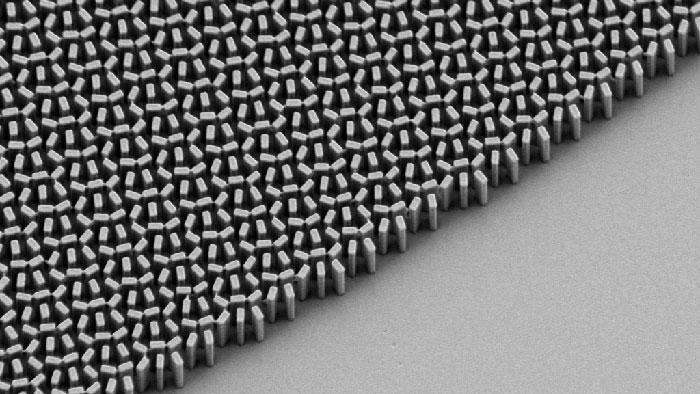HarvardSchoolOfEngineeringAndAppliedSciences
Latest

Lenses made from nanomaterials get closer to replacing glass
Researchers recently showed off breakthrough nanomaterial "metalenses" that could replace bulky glass optics. There was one problem, though -- it only worked on a single color at a time, meaning your smartphone could only do arty, monochromatic photos. However, the same team at Harvard's School of Engineering and Applied Sciences (SEAS), has unveiled a new material that works on a spectrum of colors from blue to green, opening up potential applications in specotroscopy, sensing and imaging.

Transparent gel speaker plays music through the magic of ionic conduction (video)
It may be hard to believe, but that transparent disk in the photo above is actually a fully functioning speaker. A team of researchers at Harvard's School of Engineering and Applied Sciences have pioneered a never before seen application of ionic conductivity by creating a see-through artificial muscle that can produce sounds spanning the entire audible spectrum. While ionic conduction isn't a novel idea, it's been considered impractical due to the fact that ionic materials react poorly to high voltage. The team, which included postdoctoral research fellows Jeong-Yun Sun and Christoph Keplinger (pictured above), circumvented that obstacle by placing a layer of rubber between two sheets of transparent conductive gel, allowing the system to work with both high voltage and high actuation, two qualities necessary for sound reproduction. Theoretically, soft machine technology such as this can be used to do much more than play Grieg's Peer Gynt, particularly in the fields of robotics, mobile computing and adaptive optics. To watch it in action, check out the video after the break.

Smartphone-powered mine detectors readied for field-testing in Cambodia (video)
Red Lotus Technologies is now refining and pitching its PETALS technology for real-world use around the world. Short for Pattern Enhancement Tool for Assisting Landmine Sensing, the system connects acoustic sensors to smartphones, outputting a silhouette of what lies below onto the phone's screen. The company has expanded from an initial research project that paired mine-detecting sensors with the processing clout (and availability of) smartphones. It's now developed some tablet-based training equipment for de-miners and, working alongside the Landmine Relief Fund, aims to field-test the devices in Cambodia before launching them next year.

Harvard makes distortion-free lens from gold and silicon, aims for the perfect image (or signal)
Imaging has been defined by glass lenses for centuries, and even fiber optics haven't entirely escaped the material's clutch. Harvard's School of Engineering and Applied Sciences might have just found a way to buck those old (and not-so-old) traditions. A new 60-nanometer thick silicon lens, layered with legions of gold nanoantennas, can catch and refocus light without the distortion or other artifacts that come with having to use the thick, curved pieces of glass we're used to -- it's so accurate that it nearly challenges the laws of diffraction. The lens isn't trapped to bending one slice of the light spectrum, either. It can range from near-infrared to terahertz ranges, suiting it both to photography and to shuttling data. We don't know what obstacles might be in the way to production, which leads us to think that we won't be finding a gold-and-silicon lens attached to a camera or inside a network connection anytime soon. If the technology holds up under scrutiny, though, it could ultimately spare us from the big, complicated optics we often need to get just the right shot.

Metal detectors and smartphones make beautiful, mine-sniffing music together
Harvard researchers have married a smartphone to a metal detector to create PETALS, a low cost way to improve mine detection in third-world countries. Traditionally, locating land mines has required a carefully trained ear to distinguish deadly explosives from, say, a can. This new system removes some of the guesswork by mapping the beeps on a cell phone screen, creating a silhouette of whatever is beneath the surface. Similar results have been accomplished using acoustic sensors, but so far they've been relegated to research projects and would likely be too expensive for use where they're needed most. Not only should the simplicity of PETALS (which stands for Pattern Enhancement Tool for Assisting Land mine Sensing) make it cheap and easy to deploy but, in tests novice de-miners were able to improve their performance by 80 percent -- that's a least a few less brave humanitarians going "boom" in the field.




